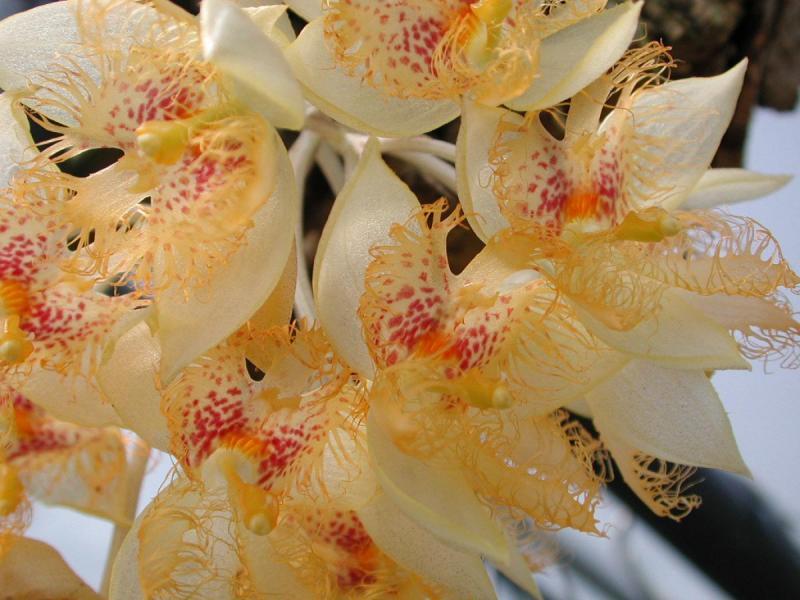Sievekingia reichenbachiana
Also known as: Reichenbach's Sievekingia or Gorgoglossum reichenbachianum in the subfamily: Epidendroideae
Native to: Ecuador
General Information
Reichenbach's Sievekingia is a miniature to small sized cool to warm growing epiphytic or lithophytic orchid belonging to the sub family Epidendroideae native to Ecuador. It is named after the German Orchidologist in the 19th century.
Plant Description
Grows to 21cm. Each new growth has numerous erect oblong shaped leaves. Pseudobulbs grow to 1.2-3cm. The plant forms clusters over time
Substrate(s)
- Bark
- Charcoal
- Treefern
- Spaghnum Moss
Care Notes
These orchids have a fine root system that can quickly die back if left dry for too long, but also does not like to be kept wet, so water regularly but ensure that the mix is dry before watering.
Climate
Grows at low to high elevations. Rainfall ranges from 3mm to 180mm per day, heaviest in October and lightest in February. Humidity ranges from 70% to 81%, highest in August and lowest in May. Temperature ranges from 14C to 27C, highest in June (17C to 27C) and lowest in February (14C to 24C).
Watering
These orchids prefer a wet-dry cycle between waterings, they should be watered frequently but only when the moisture is approaching dryness, where the pot feels light and/or the media looks dry. Keep an eye on mounted orchids in warm weather as they may dehydrate quickly.
Fertiliser
Apply liquid based fertiliser per recommended directions. They can benefit from a high phosphate fertiliser leading up to flowering season, followed by a high nitrogen fertiliser when new growth appears, and a balanced fertiliser in other times. These orchids can also tolerate slow release fertiliser applied 1-2 pellets per cup (250ml) of media.
Use balanced fertiliser during Spring and Summer. Be sure to flush out excess fertiliser by running water through the media regularly year round. Apply fertiliser regularly at half strength year round. Use a high Nitrogen fertiliser during Spring and Summer. Use a high Phosphorous fertiliser during Summer.Potting
These plants are quite forgiving and will do well repotted ever 2-3 years. The mix should be coarse, well draining, and allow space for air to move and for roots to grow.
Alternatively, these plants will also do well mounted to tree fern or cork slabs, or mounted to trees.
Best time for repotting or mounting the orchids is the end of winter when new growths start to appear. Avoid repotting during hot weather,
This plant does very well in baskets or suspended pots Repotting is best done annually.

